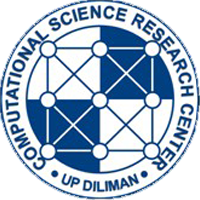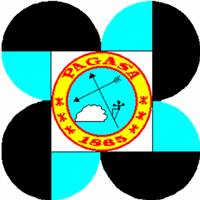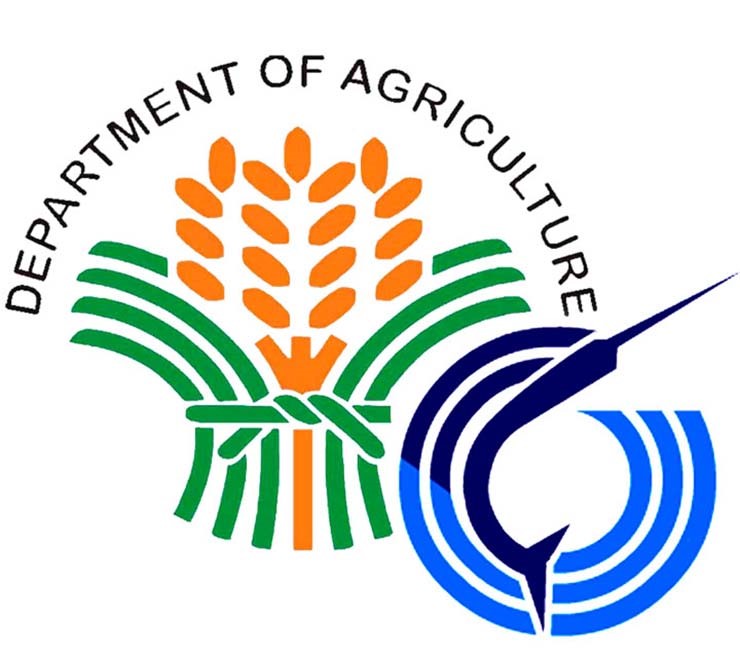The Earth Surface Materials and Processes (EarthSMAP) Laboratory




About
The Earth Surface Materials and Processes (EarthSMAP) Laboratory works on research related to earth surface processes, paleoclimate and green nanomaterials. Specific studies include shoreline mapping to quantify beach erosion rates; the use of corals and uplifted marine terraces as respective proxies for paleo-sea surface temperature and paleo-sea level; as well as synthesis of carbon nanomaterials using sustainable precursors. The laboratory also provides additional support for master and doctoral students interested to do research in the same field. The lab is equipped with computing facilities in addition to surveying and mapping equipment (DGPS, total station, echo sounder). We also have a facility to synthesize carbon nanomaterials and a conductive atomic force microscope for imaging.
Research Interest
Carbon Nanomaterials from Plant Oil
Carbon nanomaterials have vast potential applications from environmental to energy conversion, storage and devices, biotechnology and biomedicine, micro- electronic engineering, and other emerging uses in various fields (e.g., quantum computing, cosmetics, food and agriculture). This emphasizes the need to produce these nanomaterials in ways that are economically viable and at the same time environmentally sustainable to meet the demands of a rapidly growing market. The use of locally abundant and sustainable raw sources such as Calophyllum inophyllum (local name Bita-og / Bita-oy) trees can address such need. These plants grow well in marginal lands areas and do not compete with food production. They are also locally widespread and can be cultivated to a wide-range of environment, even in degraded soil and mine tailing areas. At present, this renewable resource is locally underutilized in terms of high-end by-product development. Our study highlights the development of high value products (i.e., carbon nanofibers and nanocapsules) from C. inophyllum oil. Aside from using naturally-occurring hydrocarbon precursors, the method applied in this study does not employ metal and chemical catalysts, minimizing conceivable environmental and human health risks as well as the total production costs.
Coastal Erosion
Coastal erosion is also a natural process. It only becomes hazardous when people build structures in the coastal zone that do not complement its natural evolution and processes. In the Philippines, more than 50% of the 625 km studied coast is eroding since 1970 (1). This is alarming since almost all major cities are coastal and 62% of the population lives in the coastal zones (2). One of the biggest impacts humans have on beaches is disruption of sediment source and its transport. Damaged reefs and damming of rivers diminish sediment supply. Coastal structures (e.g. quays and groins) trap sediment, accelerating downdrift erosion. Coastal tourism and unregulated beach mining also add to these stresses.
[1] Fernando P. Siringan, pers. comm.
[2] DENR, DA-BFAR and DILG, 2001. Philippine Coastal Management Guidebook Series No. 1: Coastal Management Orientation and Overview (through the Coastal Resource Management Project of DENR and USAID)
Paleoclimatology
The Philippines, being part of the Coral Triangle and the Indo-Pacific Warm Pool, is an ideal natural laboratory to study paleoclimate using coral proxies. The stable isotopes set in the carbonate skeletons of corals determine the various physical factors such as sea surface temperature, salinity, and pH where the corals grow. In the Coral Triangle, the rate of warming of the Coral Triangle is spatially varied but waters around the country are warming faster (0.3°C per decade) compared to the rest. It is crucial to understand how corals within the Philippine waters respond to this warming temperature.
The tectonically active setting of the Philippines also created several uplifted coral reef terraces. Corals on these terraces can also be used as proxies to reconstruct sea level change. In central Philippines, coral terraces were dated as far back as the Last Interglacial (~125,000 ago) where global temperature was higher than the present. Understanding the climate of the past can help us prepare for the present rapidly changing climate.
2022. Fiegalan, F. T., Ringor, C. L. and Moya, T. B. 2022. Modeling the Dynamics of Soil Organic Matter Accumulation from Leaf Litterfall as Affected by Tillage Practices in Mango Orchard. The Philippine Agricultural Scientist, 105(1), 23-34.
2020. Fiegalan, F.T., Ringor, C.L., and Moya, T.B. Incorporation of Rice Residues Through Tillage Enhances Soil Organic Matter Accumulation in Rice Land. Philippine Journal of Science 149 (4):1039-1048.
2019. Cherry L. Ringor, Katherine M. Calamba, Chelo S. Pascua, Kun’ichi Miyazawa. Morphological Controls of Fullerene Nanowhiskers and Nanotubes. In Kun’ichi Miyazawa, Yuichi Ochiai, Masaru Tachibana, Tokushi Kizuka, Shigeo Nakamura Eds. Fullerene Nanowhiskers, 2nd Edition Pan Stanford, 326 pp.
2019. Cajucom, E.P., Chao, G.Y., Constantino, G.A., Ejares, J.A., Quillope, S.J.G., Solomon, H.M., and Ringor, C.L. (2019). Evaluation of the spatial distribution of evacuation centers in Metro Manila, Philippines. International Archives of the Photogrammetry, Remote Sensing and Spatial Information Sciences – ISPRS Archives, 42 (3/W8), Pages 79-85.
2019. Villanueva, J.C.B., Ringor, C.L., Pascua, C.S., and Miyazawa, K. Size, structure, and conductivity of plant oil-derived carbon nanospheres synthesized by atmospheric ionization CVD. Materials Chemistry and Physics, 225, Pages 84-90.
2017. Fernan T. Fiegalan, Cherry L. Ringor, Tolentino B. Moya. Collembola Inoculation in Soil Incorporated Mango Leaf Litter Enhances Decomposition for Organic Matter Building and Nutrient Banking, International Journal of Science and Research, IJSR Archive Volume 6 Issue 10 October 2017.
2017. Cherry L. Ringor, Chelo S. Pascua, Jancel Carlo B. Villanueva, Alexis Karla H. Garcia, Ian Jasper A. Agulo, Yoshitaka Matsushita, and Kun’ichi Miyazawa. Multiwalled Carbon Nanofibers and Nanocapsules Synthesized from Plant Oil via Atmospheric CVD Process Journal of Nanoscience and Nanotechnology, 17, 3543–3550.
2016. Cherry Ringor and Fernando Siringan. Net Sediment Transport in Pampanga Bay, Northwestern Manila Bay Derived from Grain Size Trends, Bathymetric Change, and Landsat Data. The Philippine Agricultural Scientist, 99(1), 68-79.
2015. Katherine Calamba, Cherry Ringor, Chelo Pascua, and Kun’ichi Miyazawa. Pleated Surface Morphology of C60 Fullerene Nanowhiskers Incorporated by Polyaniline in N-Methyl-2-Pyrrolidone. Fullerenes, Nanotubes and Carbon Nanostructures, 23(8), 709-714. DOI: 10.1080/1536383X.2014.971118
2009. Cherry L. Ringor and Kun’ichi Miyazawa. Fabrication of solution grown C60 fullerene nanotubes with tunable diameter. Journal of Nanoscience and Nanotechnology, 9(11), 6560-6564.
2009. Hideaki Kitazawa, Kenjiro Hashi, Tuerxun Wuernisha, Kayoko Hotta, Cherry L Ringor, Takao Furubayashi, Atsushi Goto, Tadashi Shimizu, and Kun'ichi Miyazawa. Molecular dynamics and structural phase transition in C60 nanowhiskers. Journal of Physics: Conference Series, 159: 012022.
2008. K. Miyazawa, S. Cha, C. Ringor, J. Okuda, A. Taniguchi, M. Watanabe, M. Tachibana, and J. Minato. Synthesis of fullerene nanotubes and microtubes for materials storage, delivery and recovery. NANO: Brief Reports and Reviews 3(5), 335–339.
2008. Cherry L. Ringor and Kun’ichi Miyazawa. High yield preparation of fullerene nanowhiskers and nanotubes by the solution route. NANO: Brief Reports and Reviews 3(5), 329–333.
2008. C. L. Ringor and K. Miyazawa. Synthesis of C60 nanotubes by liquid-liquid interfacial precipitation method: influence of solvent ratio, growth temperature, and light illumination. Diamond and Related Materials 17, 529-534.
2008. Mingsheng Xu, Y Pathak, Daisuke Fujita, Cherry Ringor and Kun’ichi Miyazawa. Covered conduction of individual C60 nanowhiskers. Nanotechnology 19(7), 075712.
2008. Kun’ichi Miyazawa and Cherry Ringor. Platinum chloride deposition into C60 nanotubes. Materials Letters 62, 410-413.
2007. Cherry Ringor, Kun’ichi Miyazawa, and Tohru Awane. Synthesis of C60 fullerene nanotubes by the liquid-liquid interfacial precipitation method. Transactions of the Materials Research Society of Japan 32(4), 1011-1014.
2007. Kun’ichi Miyazawa, Kazuma Saito, Cherry Ringor, and Tokushi Kizuka. Ultrasonic pulverization of fullerene nanofibers. Transactions of the Materials Research Society of Japan 32(4), 1007-1011.
2004. Cherry L. Ringor, Akio Omura and Yasuo Maeda. Last Interglacial Sea Level Changes Deduced from Coral Reef Terraces in Southwest Bohol, Central Philippines. The Quaternary Research 43(6), 401-416.
1998. Fernando P. Siringan and Cherry L. Ringor. Changes in Bathymetry and Their Implications to Sediment Dispersal and Sedimentation Rates in Manila Bay. Science Diliman, 10(2), 12-26.
1997. Fernando P. Siringan and Cherry L. Ringor. Predominant Nearshore Sediment Dispersal Patterns in Manila Bay. Science Diliman, 9(1 & 2), 29-40.
1996. Fernando P. Siringan and Cherry L. Ringor. Changes in the Position of the Zambales Shoreline Before and After the 1991 Mt. Pinatubo Eruption: Controls of Shoreline Change. Science Diliman, 7-8, 1-13.
| Students/Thesis Title | Degree Program | Date Graduated |
|
Abel D. Lagon
|
MS Environmental Science |
December 2018 |
|
Ma. Rebecca S. Soriano
|
MS Environmental Science |
July 2017 |
|
Jancel Carlo B. Villanueva
|
MS Materials Science and Engineering |
July 2017 |
|
Cyndi S. Ignacio
|
MS Environmental Science |
July 2015 |
|
Michelle T. Manglicmot
|
MS Environmental Science |
May 2015 |
|
Noreen Marie G. Follosco
|
MS Environmental Science |
May 2015 |
|
Astrid Korina S. Gabo
|
MS Environmental Science |
Jan 2018 |
|
Katherine M. Calamba
|
MS Materials Science and Engineering |
October 2012 |
|
Ma. Carmela T. Garcia
|
MS Materials Science and Engineering |
April 2012 |
|
Armida V. Gillado
|
MS Materials Science and Engineering |
April 2012 |
Profiling of Persistent and Emerging Pollutants in Sites Associated with Industrial Areas in the Philippines Program – Sediment Transport Project
Project Leader
Duration: January 2018 – December 2019
Funding Agency: Emerging Interdisciplinary Research Program- University of the Philippines (EIDR-UP)
Portable Potable Water Equipment for Disasters and Emergencies (PoPWEDE Project)
Co-Project Leader
Duration: January – December 2018
Funding Agency: Philippine Council for Industry, Energy and Emerging Technology Research and Development – Department of Science and Technology (PCIEERD-DOST)
Coastal Stability (Coral Reef Visualization and Assessment Program)
Project Leader
Duration: January 2014 – December 2017
Funding Agency: Department of Environment and Natural Resources (DENR)
LIDAR Data Processing & Validation in Luzon: CAR and Selected Sites in Region 1
Project Staff L3
Duration: June 2014 – December 2016
Funding Agency: PCIEERD-DOST
Acquisition of Detailed Bathymetry for Coastal Erosion Management
Project Staff L3
Duration: March 2012 – June 2015
Funding Agency: Philippine Council for Agriculture, Aquatic and Natural Resources Research and Development-DOST (PCAARD-DOST)
Synthesis, Morphology and Chemical Modifications of Fullerene-Based Nanomaterials for Nano-engineered Structural Materials and Optoelectronic Applications
Project Leader
Duration: February 2014 – February 2015
Funding Agency: PCIEERD-DOST
Reconstructing Historical Flood Events from Massive Corals
Project Leader
Duration: January – December 2012
Funding Agency: Natural Sciences Research Institute, UP-Diliman (NSRI-UPD)
Coral Assemblages in Modern and Uplifted Reef Terraces from Pamilacan Island, Bohol
Project Leader
Duration: January – December 2011
Funding Agency: NSRI-UPD
Fullerene Nanowhisker/Nanotube – Polyaniline Nanocomposite
Project Leader
Duration: November 2010 – November 2011
Funding Agency: Office of the Vice Chancellor for Research and Development, UP-Diliman (OVCRD-UPD)
Sea Surface Temperature Variability During High Sealevel Stands Recorded by Porites
Corals from Bohol, Philippines
Project Leader
Duration: January – December 2010
Funding Agency: NSRI-UPD
Retrospective Analyses of Climate Change from Coastal Erosion Trend and Uplifted Coral
Reef Assemblages
Project Staff L3
Duration: January 2009 – January 2011
Funding Agency: PCAARD-DOST
















